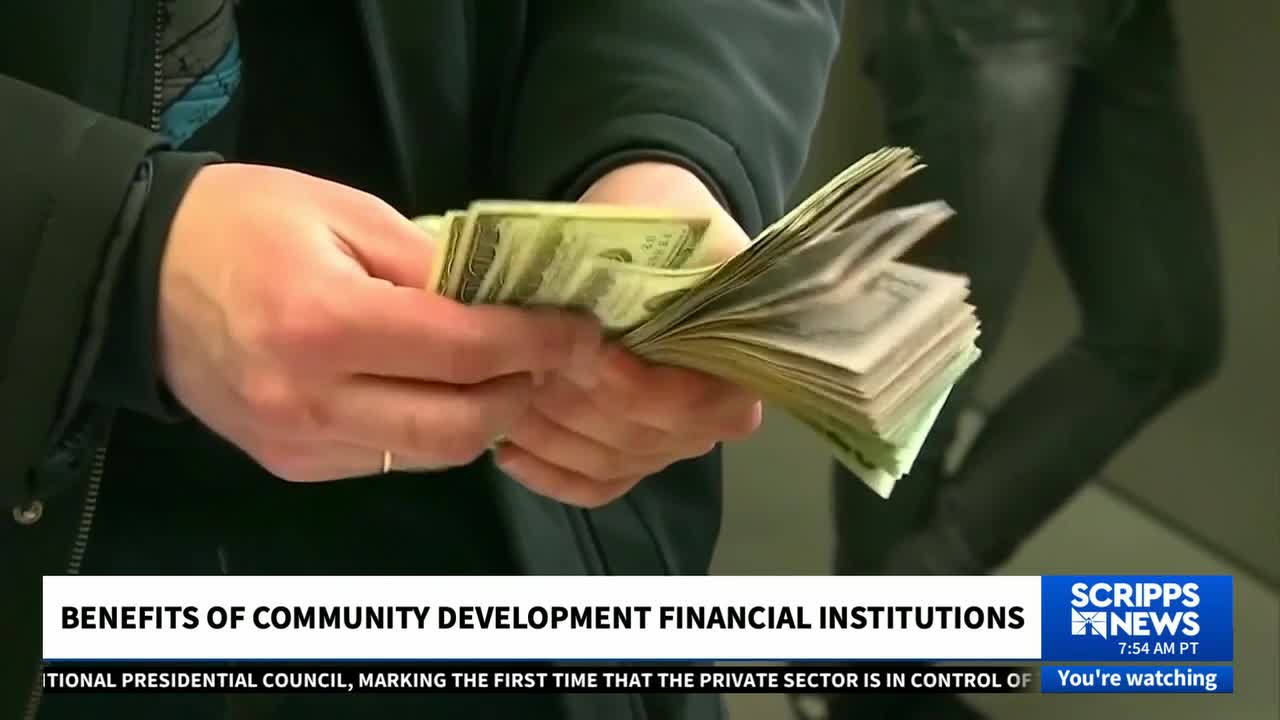When Kathleen Bradley got a ballpark estimate of $20,000 for a repair related to her home's air conditioning, she was worried.
"I said money is hard and it's hard to come by. I'm 79 years old, I can't find a job right now," Bradley said.
She did what any responsible homeowner would do and got more estimates. One of the contractors handed her a flyer with information for a lender called the Solar Energy Loan Fund, or SELF.
SELF isn't a typical lender. It's what is known as a CDFI or Community Development Financial Institution. A CDFI is a U.S. Treasury designation applied to financial institutions with a mission.
CDFI's can be a bank, a credit union, loan fund, or, in some cases, a venture fund. They operate in rural and underinvested urban areas, filling financial gaps across the country.
But there's growing uncertainty about federal dollars already approved by Congress from the fund for the 2025 fiscal year, which ends in September. In March, President Donald Trump signed an executive order requiring the CDFI Fund to limit activities to its minimum statutory functions, raising questions about which programs will continue.
A bipartisan group of lawmakers is calling for the release of CDFI funds, drafting a letter on August 1st.
Lawmakers from 23 states signed it, citing that the funds help run programs focused on everything from affordable housing and healthcare to small business growth.
In the case of SELF, its mission is to help low- and middle-income households make necessary home repairs and upgrades that support sustainability.
Bradley is retired and on a fixed income. She dogsits to help ends meet.
"I'll tell you right now, that brings me through the year, and I'm able to save a little bit more," Bradley said.
With the help of a loan officer from SELF, Bradley found a contractor with a much lower price. But the total cost of the repairs still landed outside her budget at nearly $10,000. She had money in savings, but didn't want to spend it all in case she needed it for something else, like health care.
Bankrate surveys found more than half (54%) of Americans don't have a fully funded emergency fund.
When it comes to loans, nearly half of all loan applicants have been denied in 2024.
Doug Coward, who is also the director of national expansion and partnerships, helped found SELF in 2010 on the east coast of Florida.
He wanted to help his community repair and upgrade their homes to face the challenges of a changing climate. He saw an opportunity to be a part of the green economy while helping others.
"Simply investing in high-efficiency ACs, heat pumps, weatherization that can typically cut your energy bills by 25, 30% — and it's very cost-effective. The return on investment is very strong," said Coward.
But for lower-income communities, the investment is simply out of reach.
"They're the ones who are most impacted by climate change. It's driving up energy bills. It's affecting health and safety and comfort and quality of life," said Coward.
SELF has partnered with green banks and other CDFIs in 17 states, expanding along with other programs around the country. The number of CDFIs has grown nearly 50% over the past five years, totaling nearly 1,487 in all 50 states.
"They function to expand access to capital and financial services where mainstream financial institutions either don't find it profitable enough or find it too risky," said Brett Theodos, a senior fellow with the Urban Institute.
Rural areas, smaller project sizes, literal distance, higher rates of poverty, and lower growth trajectories are some of the reasons an area or community might lack mainstream funding, said Theodos.
Theodos helped map the economic impact of CDFIs across the country, finding that CDFIs are one of the most cost-effective tools available to policymakers. For every $1 in federal funding, $5-$10 in additional private funding was unlocked.
"CDFIs do not function effectively in isolation. They are not big enough and they don't have enough subsidy in them to overcome deep levels of disinvestment," said Theodos.
He added that the amount of investment in CDFIs is more important than the number of CDFI programs. Businesses still need customers, housing needs developers and renters, and loans still need to be repaid.
When it comes to people in Bradley's situation, or people with low credit scores, the small loan can be a lifeline. Merchant cash advances, payday advances or loans from a credit card come with costly interest rates.
Predatory lending and credit card debt are something Coward hopes he can help people avoid.
"I don't know if I would have been able to do it without them, to be quite honest," said Bradley.





